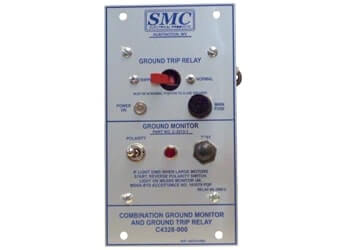 In an industrial setting, electrical safety is critical to ensure the protection of employees, equipment, and property. A ground fault circuit interrupter (GFCI) is a device that plays a crucial role in protecting people and equipment from electrical hazards in an industrial environment. GFCIs are designed to detect and interrupt electrical current leaks, also known as ground faults, that could lead to electrical shock, electrocution, or equipment damage.
In an industrial setting, electrical safety is critical to ensure the protection of employees, equipment, and property. A ground fault circuit interrupter (GFCI) is a device that plays a crucial role in protecting people and equipment from electrical hazards in an industrial environment. GFCIs are designed to detect and interrupt electrical current leaks, also known as ground faults, that could lead to electrical shock, electrocution, or equipment damage.
What Is a GFCI?
Ground fault circuit interrupter (GFCI), can be used to prevent electrocution. The GFCI cuts off power to the body if it experiences a shock.
GFCIs can be installed anywhere electrical circuits might accidentally come in contact with water. They can be found in bathrooms, kitchens, laundry rooms, and even outside of doors in garages where power tools may be used.
What Is a Ground Fault?
The National Electrical Code defines a ground fault as a conductor connection between an electric conductor and any conducting material. Electricity is always looking for a route to ground. Ground faults are where electricity finds a way to ground. However, it is not the path that electricity intended to travel, like through a person's body.
This potential shock is why GFCI protection was created to protect human lives.
How Does a GFCI Work?
The GFCI "senses" the difference between the current flowing into and out of the circuit, even if it is only 4 or 5 milliamps. The GFCI responds rapidly (in less than one-tenths of a second) in order to trip or turn off the circuit.
What are the different types of GFCIs
There are three types of GFCIs. The most common GFCI type, the "receptacle-type", is similar to a wall outlet. Circuit breaker GFCIs can be used to replace standard circuit breakers. They provide GFCI protection for all receptacles in a circuit. These GFCIs can be used as temporary or portable devices in construction, outdoors, and with similar tools such as electric mowers, trimmers, and other equipment. These GFCIs should not be considered a permanent replacement for a regular GFCI. Before using temporary GFCIs, it is important to test them.
How Should GFCIs Be Tested?
Many people don't verify that their GFCIs are functioning properly. Electronic devices such as GFCIs can become damaged or worn out. Even if the GFCI circuit stops working, the electrical receptacle may still function. It is important to have an electrician inspect it and replace it as soon as possible.
To ensure that GFCIs are working properly, they should be checked every month. Regardless of whether you have a circuit breaker GFCI or a receptacle, pressing the TEST button will turn off the circuit's power. The GFCI-type receptacle should be turned off by pressing the TEST button. To re-establish protection and power, push the RESET button. The circuit breaker-type GFCI handle should be moved to the tripped position by pushing the TEST BUTTON. To restore power and protect your home, make sure to reset the handle.
When Is It Appropriate to Test GFCIs?
To ensure that GFCIs are working properly, they should be tested every month. You can use a portable GFCI out of doors with different electrical power tools, such as drills, mowers, and trimmers, but it should be tested before every use.
Where Can GFCIs Best Be Used?
It is recommended that GFCIs are installed in areas where appliances or power tools are frequently used near water. Tap water and wet objects can conduct electricity easily, increasing the chance of you being shocked by a ground fault. Although appliances with GFCI protection are required by law for hair dryers now, there are still many appliances that do not have GFCI protection.
What Is Nuisance Tripping in a GFCI?
To cause a GFCI trip, it takes 5 mA (0.005 ) of current loss from the hot wire and ground. In some circuits, a small amount of current leakage may prove difficult to avoid. If the hand-held power tool is in good condition, it will not cause a problem with tripping. Some stationary motors such as fluorescent lighting fixtures or bathroom vent fans can cause nuisance tripping. A long circuit that has many splices could be another problem. Keep GFCI circuits shorter than 100 feet. A GFCI should not be used to supply water.
- Circuits that exceed 100 feet
- Fluorescent and other types of electric discharge lighting fixtures
- Permanently installed electric motors
What Is the Difference Between an AFCI and a GFCI?
Arc fault circuit interrupters are safety devices that protect homes from fires that can be caused by unreliable wiring.
GFCIs and AFCIs are not to be confused. Both GFCIs and AFCIs are safety devices that have important functions. GFCIs deal with shock hazards, whereas AFCIs are designed to combat fire hazards.
Contact Us
A ground fault circuit interrupter (GFCI) is a simple yet effective device that can help prevent electrical accidents and protect your assets. If you haven't already, consider implementing GFCIs in your industrial setting to ensure electrical safety. At the same time, ensure that you are in compliance with the law. Don't wait until an accident occurs - take proactive steps to protect your employees and equipment with GFCIs from Becker Mining. Contact us today to learn more about our products and services.
Products We Offer:
- Explosion Proof Equipment
- Transformers
- Arc Guard
- Longwall Electrical Systems
- Capacitor Trip Devices
- Electrical Equipments like capacitor banks, switch houses, junction and splice boxes.